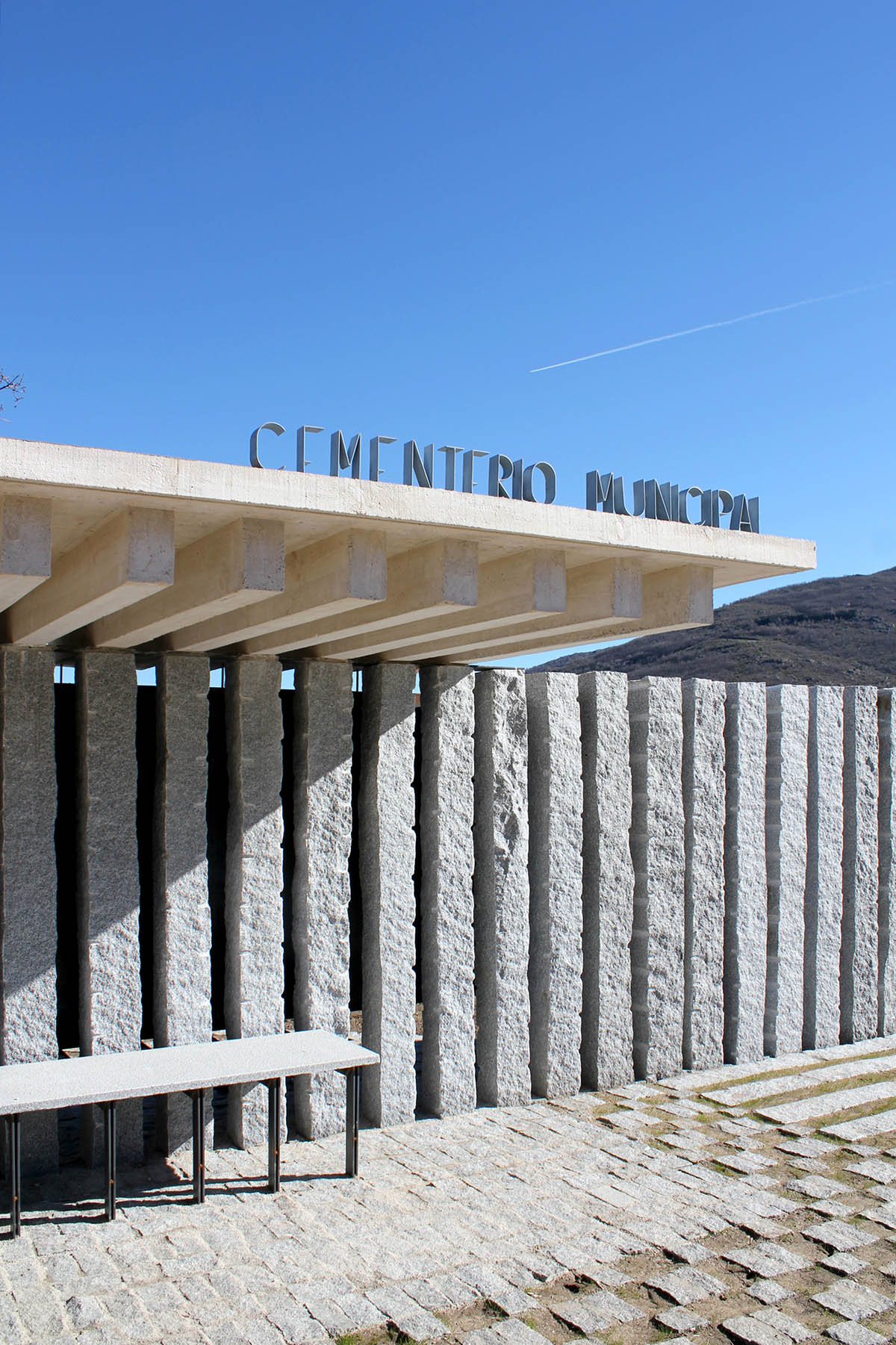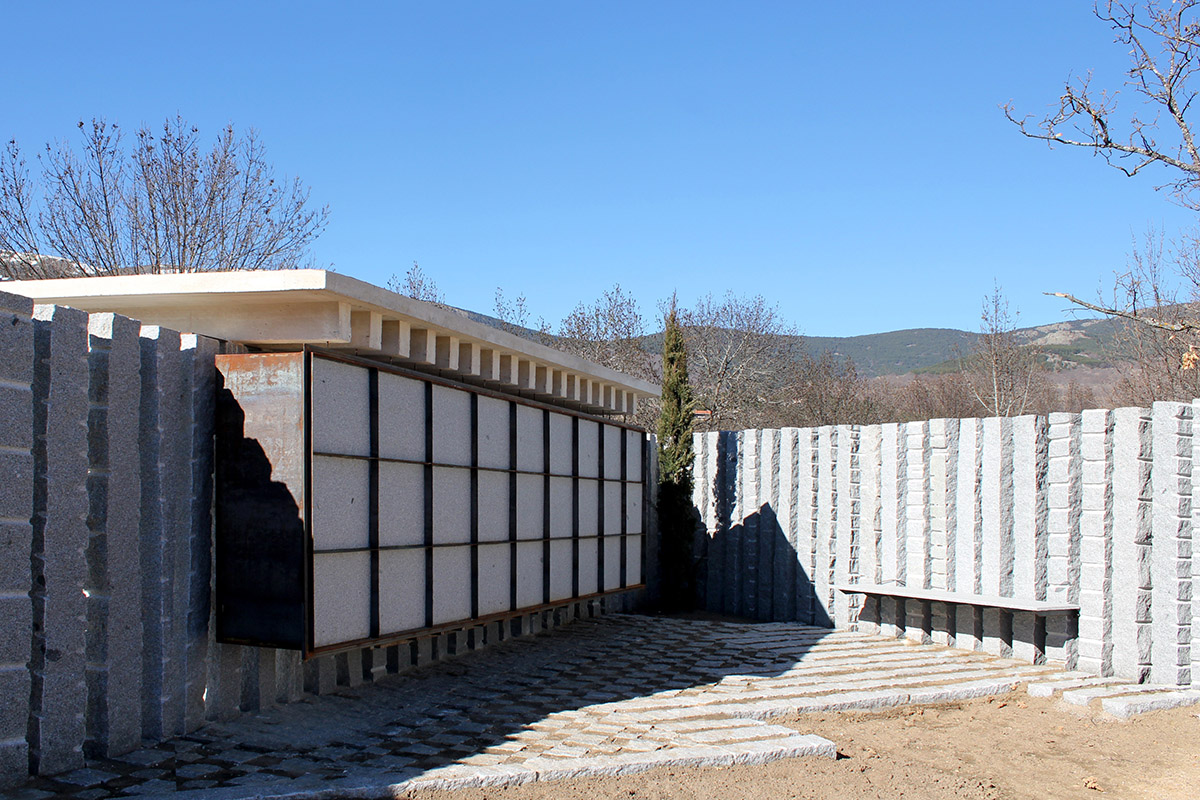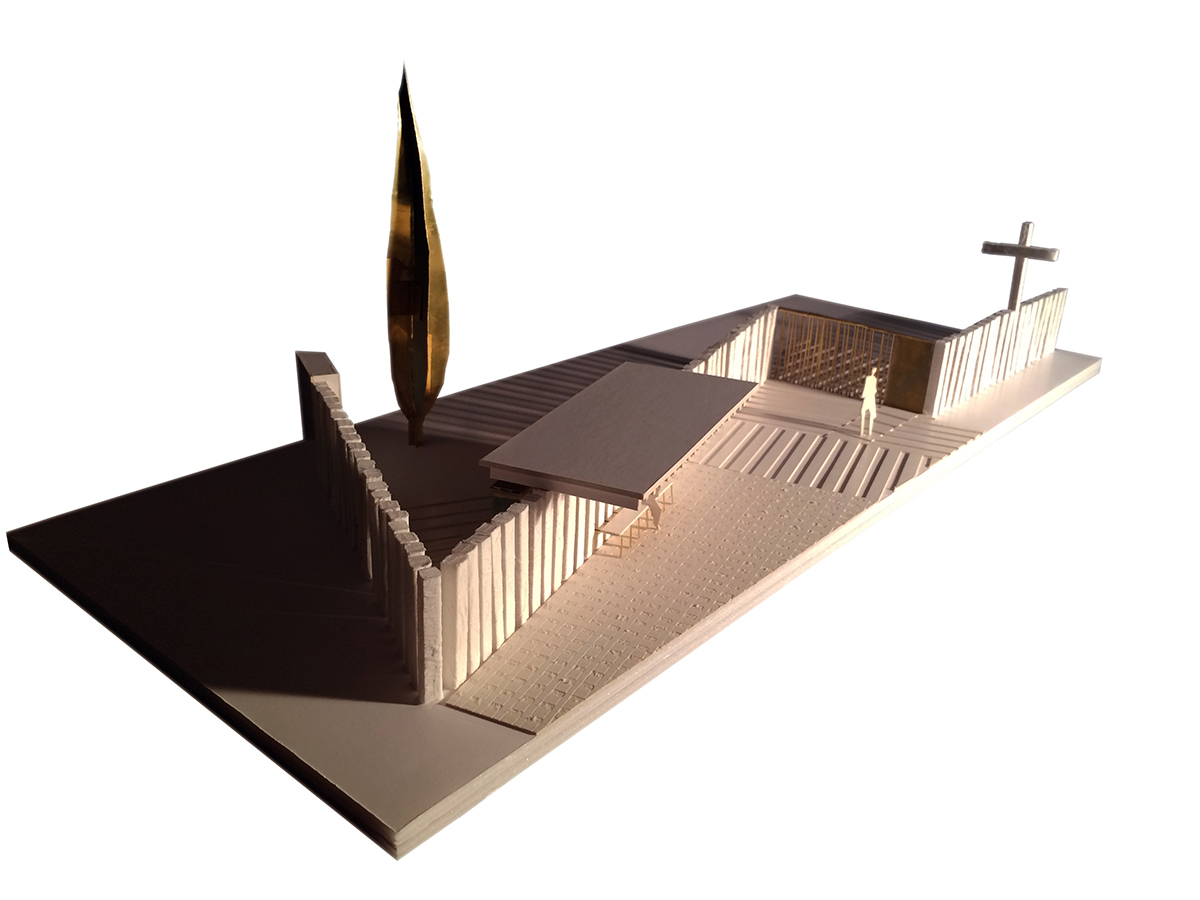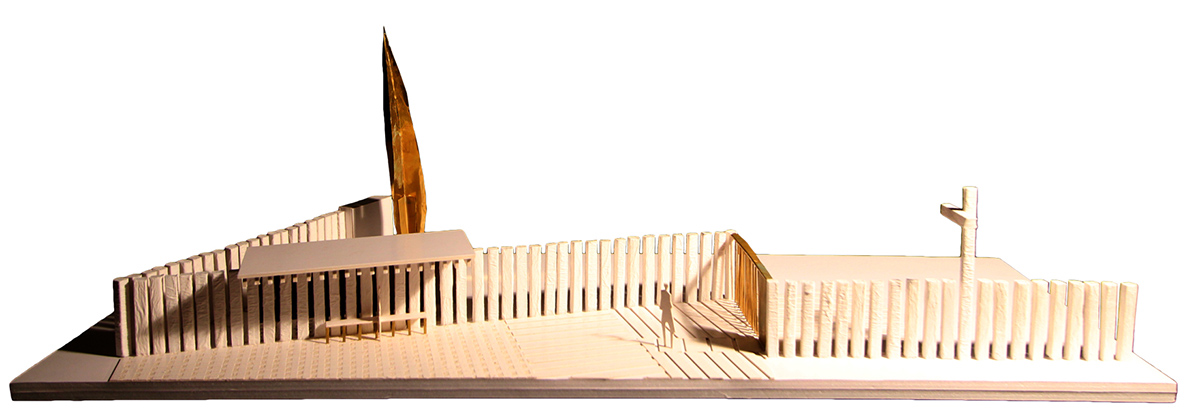Submitted by WA Contents
Muka Arquitectura completes New Access and Columbarium in Lozoya, Madrid
Spain Architecture News - Jun 29, 2016 - 12:04 8574 views

Muka Arquitectura completed the project 'New Access and Columbarium' in Lozoya, Madrid. The local goverment of Lozoya put the studio in charge of the intervention in the closing and enlargement of the Municipal Cemetery. Muka Arquitectura focused on the separating element between, according to Platon, the visible world and the intelligible world, that is, the earthly world from the eternal one. The half-ruined clay wall which needed to be repaired separated both physically and visually the two different worlds, as if both of them could be understood through the wall.
Would it be possible to express the dependence that exists between the two different stages the man go through by means of the access to the cemetery or the quality of the materials? This project gives us one of the multiple answers that using the architecture looks over this more poetic condition.

Firstly, it was decided that the new closing was permeable, allowing the air to cross one and another area and observe the inside of the enclosure in a partial way. For this reason, a combination of granite pilasters driven into the ground was placed in a primitive way, all of them lined up and with a separation of eighteen centimeters between them. The series of these columns remind of the Xi’an terracotta warriors that watched over the Emperor’s grave, although these ones are slimmer and closer to the Giacometti’s beings without a shadow.

These new stone guards keep an eye on humbler burials. The shear cut of the pilasters gives a wrinkled quality to the finish but they don’t repeat neither the geometry nor the clean cut. Like the marks on long-lived men and women’s bodies, their wrinkles offer the reading of their own history and the passage of time. And the air goes ahead between them, whistling and muttering a song that will lead all men at least once in life.
The pilasters not only suggest the closing by means of their lining up but they also support the weight of the air above them, holding the sky. The angular geometry of the new closing gives the possibility of putting vehicles into the cemetery and due to this fact a new area is created behind it. This zone is used as a columbarium and an outdoors praying place next to the only cypress to be planted.

Moreover, the broken lines try to express the violent condition which means to change from life to death. Due to the access’orientation and unlike Giacometti’s sculptures, the shadows of the pilasters projected on the land sweep, at dawn, the outside of the cemetery and along the day they go over the ground and finish with the shadow thrown to the inside of the area at night. The shadow rises in the fertile land and dies in the cemetery.
So, day after day, it goes across the same cycle in order to remind us daily of both our beginning and our end. The cross, which is noticed from the distance as if it was a reference in the landscape, presents the same track as the other pilasters and it is placed substituting one of them.

This element is a part of the cemetery’s closing and at the same time it raises over the rest of the granite warriors and proposes the cross with a slightly deformed arm, adopting the proportions of a human form with opened arms prepared to embrace us forever.
The columbary is placed behind the pilasters, inside the graveyard. Above this, a horizontal concrete tray slides on the columns flying to the outside as if it was a pergola creating a waiting and a mourning area. The elements of this composition are not dispensable. The bench, the pergola and the columbarium create an structural balance that has its origins in the constructive rigour of the piece.

The mourning bench has been built using a string of L-shaped gussets which emerge vertically from the foundations to fly towards the inside of the area and to support, at the same time, the columbarium from the basis. A 20 cm stick has been proposed between the pilasters to be a toehold for the gussets, creating a lever moment when the sitting man balance the strenghts against the ashes’ weight in the other side of the closing while he is welcoming the deceased.

The bench compensates not only the physical strenghts but also the vital ones as an irreplaceable element. The pavement also takes part in this reading. The paving positioning, with different geometries is pointed toward the cemetery’s entry and it allows the vegetation to emerge in the granite in order to counteract the hardness of the pavement that must support the cross of the vehicles while the vegetation creates a broken green cape by means of its presence.

To finish, the entry’s door has been projected to pivot, with a narrower side working as a pedestrian access and another one that is longer from which the vehicle can access. In this case, due to the fact that it has an off-center axis it was decided not to compensate the strenghts of the entry using tensors. The door, as the technicians usually say, heads. The person who tries to open it has to make an additional effort not only because of the displacement but also to balance the vertical strenghts that are not compensated between both sides of the turn axis.

As a result, the additional resistance that the door exerts on the person who uses it is the same as the lifeless body reluctant to go through that limit for first and last time. It was difficult for the studio to suggest a gate whose turn axis could work correctly, like an effortless weather-vane because it is the only door with just one direction, the entry one that everybody is opposed to go through. Both the access door and the whole project try to celebrate the life.


Project Facts
Project: Adaptation and enlargement of the entrance
Address: Municipal Cemetery. Lozoya del Valle (Madrid)
Developer: Lozoya Townhall
Country: Spain
Date of termination: 2016
Architect: Moisés Royo
Collaborators: Adelina de la Cruz, Martín Jario, Alberto Martín
PEM Budget: 34.030,14 €
All images © Muka Arquitectura
> via Muka Arquitectura
